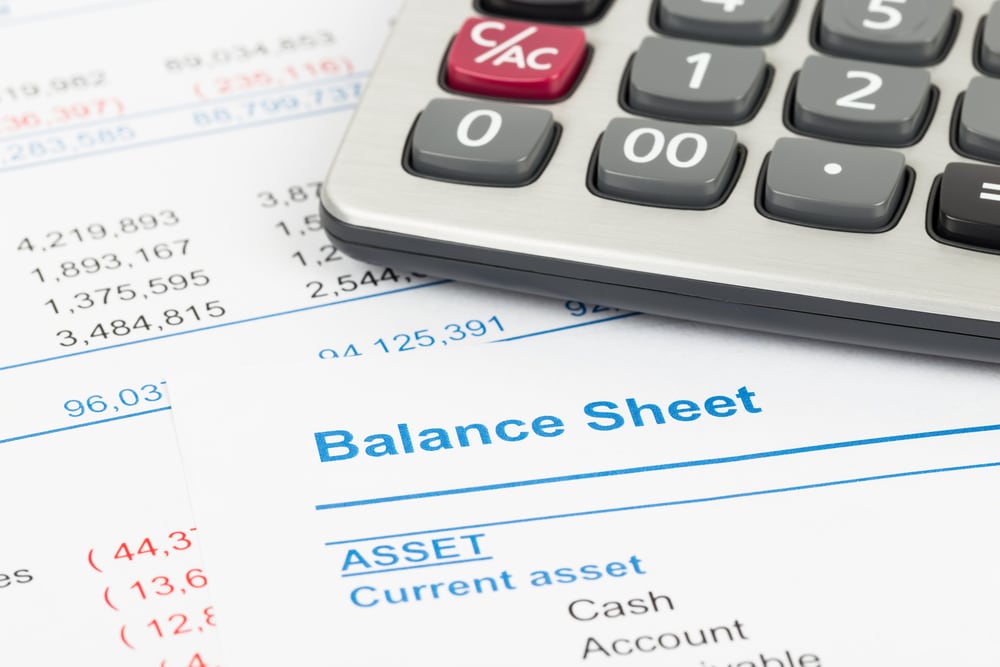Learn about the three main components of a balance sheet – assets, liabilities, and shareholder equity – and understand why they’re important for UK businesses.
Overview of a Balance Sheet
A balance sheet displays assets, liabilities, and shareholder equity. Balance sheets are essential in determining the current, past, and future financial standing of any business.

These financial statements are put together and most commonly used by accountants. However, company leaders and investors will also use and implement balance sheets when conducting research and in meetings.
Balance sheets are one of the three core financial statements, next to your cash flow statement and income statement. They’re a requirement for private limited companies when preparing annual accounts.
Balance Sheet Breakdown
Assets
Assets can be viewed and analysed in several ways on a balance sheet. They are listed in order of current value, with your most liquid assets being found at the top of this list. These assets are the ones that can be converted into cash most easily.
These assets can also be classed as your “current assets”, that your company will most likely sell or use within the next year. Current assets include the likes of checking and savings account balances, marketable securities, receivable accounts, inventory, and cash.
Further down the list, you can view your non-current assets. These are assets that you won’t be able to convert into cash any time soon (as in, within the next year). Sometimes referred to as fixed assets, these are used to provide long-term security.
Non-current assets include the likes of real estate, machinery, equipment, patents and copyrights, etc.
Liabilities
A balance sheet will also show your liabilities. This includes the money and equipment that you owe to someone else – basically, it’s the stuff your company can’t profit from.
Similar to assets, these are broken down into current liabilities and non-current liabilities.
Current liabilities are the debts that you will be paying off in the next year. These can be found near the top of the liabilities list on your balance sheet. This includes utility costs, deferred revenue, wages payable, accounts payable, interest owed, and commercial paper.
Non-current liabilities, also known as “long-term liabilities”, are any debts that you definitely don’t need to pay off in the next year. This includes deferred liability tax, long-term loans and leases, and bonds payable.
Shareholder equity
Shareholders equity refers to the breakdown of stocks owned by owners and investors of the company. In this section, you’ll be able to review the total value of the company’s stock and information regarding gains and losses.
This can include retained earnings, which refers to anything that the company reinvested into the enterprise. If the company currently has more debt than profit, this will be displayed in this section as an accumulated deficit. Additionally, you can also review retained earnings, common stock, and preferred stock here.
Why is a Balance Sheet Important?
A balance sheet allows a company to determine its current financial position. By assessing its financial health, risk can be more accurately determined.
A quick look at a balance sheet will be enough to determine whether a company’s assets are liquid enough, whether or not it has overborrowed, or whether it has enough money (or cash equivalents) to keep on top of demand.
Plus, this financial statement is often necessary when applying for loans and other cash aid. A bank will need to review a company’s balance sheet to determine risk level.
Furthermore, balance sheets can also boost transparency within a company. This financial statement can be passed around to employees to convey the current health of the company.
Final Thoughts
Balance sheets display the assets, liabilities, and equity of a company. It is used to determine a company’s financial health, both presently and in the future. A balance sheet can help a company internally with financial planning. It also helps companies externally, by displaying to banks and loan providers the current fiscal health of a company.
Balance sheets are easy to understand by also easy to get wrong. To avoid mistakes, you should hire an accountant to take care of your balance sheets for you.
Sources:
https://www.theforage.com/blog/skills/balance-sheet
https://www.investopedia.com/terms/b/balancesheet.asp